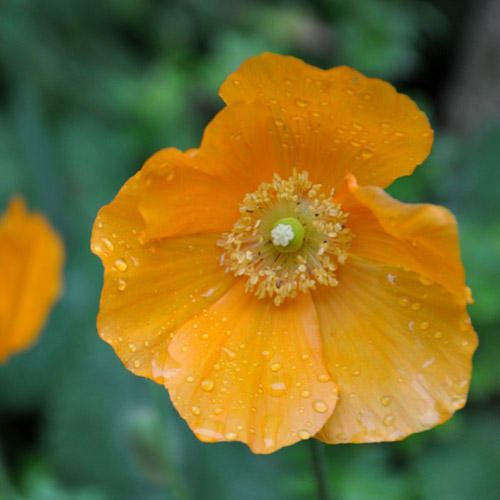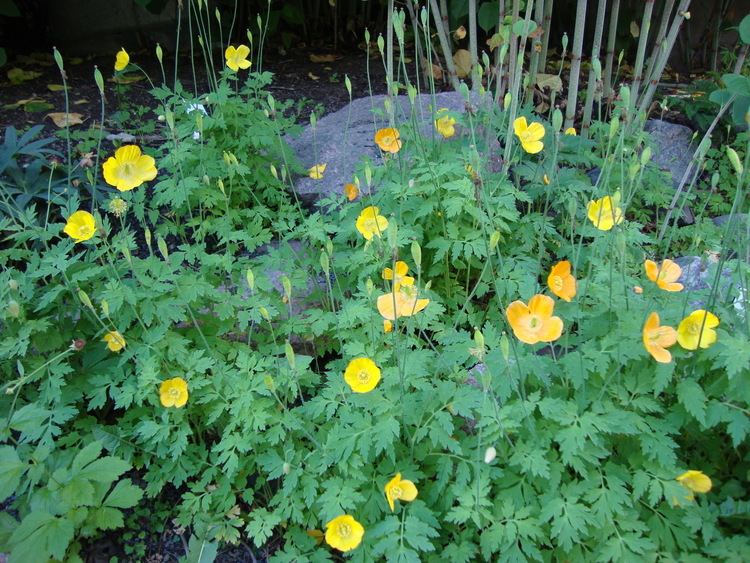Kingdom Plantae Family Papaveraceae Scientific name Meconopsis cambrica Rank Species | Order Ranunculales Genus Meconopsis Higher classification Meconopsis | |
 | ||
Similar Meconopsis, Meconopsis betonicifolia, Papaveraceae, Papaver orientale, Papaver nudicaule | ||
Meconopsis cambrica, the Welsh poppy, is a perennial flowering plant in the poppy family Papaveraceae. It has yellow to orange flowers and is widely grown as a garden plant. It is a native of damp, rocky sites in upland areas of Western Europe from the British Isles to the Iberian Peninsula. It has been used since 2006 as the basis for the logo of the political party Plaid Cymru.
Contents

Description

Meconopsis cambrica has pinnately divided leaves composed of pinnately divided leaflets. The flower is distinctively yellow or orange with four petals, and coarsely hairy green sepals that fall off soon after the flower opens. It spreads easily from the numerous small black seeds produced in the summer.
Distribution

Meconopsis cambrica is endemic to upland areas of Western Europe; it is found natively in the mountains of the Iberian Peninsula, the Pyrenees, the Massif Central and some western parts of the British Isles (Wales, south-western England and parts of Ireland). It has, however, been widely naturalised outside its native range.
Ecology

Meconopsis cambrica lives in damp, shady places on rocky ground. In its most western locations, it is increasingly found on more open ground with less cover. It is especially well adapted to colonising gaps and crevices in rocks and stones. This habit has enabled it to colonise the urban environment, growing between paving slabs and at the edges of walls.
Taxonomy and phylogeny

The species was originally named by Carl Linnaeus in his 1753 Species Plantarum as Papaver cambricum. In 1814, Louis Viguier separated it from Papaver, making it the type species of the new genus Meconopsis. One of the reasons was the structure of the style: Papaver has unstalked stigmas, arranged in a disc shape, whereas M. cambrica has stigmatic surfaces at the end of a distinct style. Later, many newly discovered species from the Himalayas and adjacent regions of China were added to the genus. M. cambrica is the only species that is native to Europe.
However, a molecular phylogenetic study published in 2011 showed that M. cambrica is not related to other species of Meconopsis, but is instead nested within Papaver, suggesting that Linnaeus' original name should be restored. However, this would leave the genus Meconopsis without a type species and hence without a valid name, unless the name were to be conserved.
In human culture
On 24 February 2006, the Welsh political party Plaid Cymru adopted a stylised image of M. cambrica as its party logo.
